|
BULB LOG 51 --- 19th December 2007
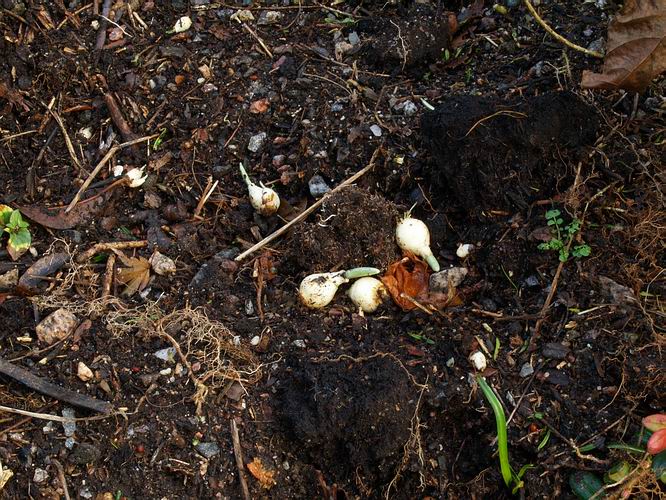
Galanthus bulbs
I discovered these poor Galanthus bulbs lying on the surface of one of the garden beds - pulled up, I have no doubt, by a blackbird searching for grub. The black birds are always the first to discover the emerging shoots of bulbs as they approach the soil surface. I suppose that the shoots must look like potential food to them as they grab them and haul them up. Blackbirds also enjoy destroying cushion plants in our raised beds, I watched one day as a male black bird ripped a cushion of Armeria maritima apart before eating a couple of slugs it found hiding in the foliage. I presume we are supposed to be grateful that they are keeping down the slug population but not when they destroy a cushion while doing it!
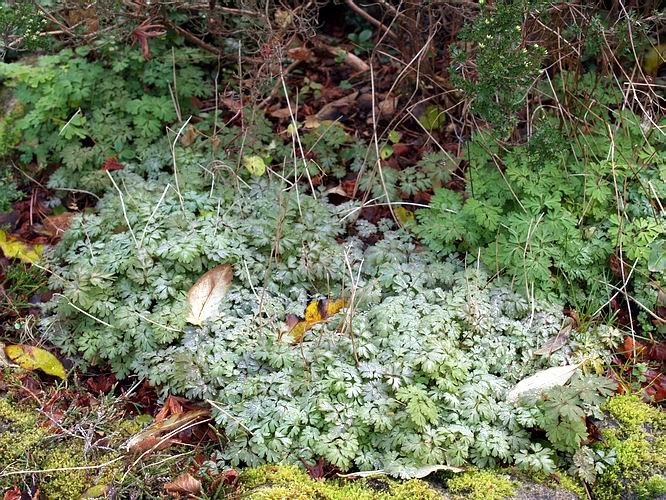
Corydalis flexuosa and x 'Craigton Blue' leaves
As I walked around the garden looking to see what I could find of interest for the bulb log my eye was drawn to the lovely silver grey foliage of Corydalis flexuosa. The greener foliage towards the back is that of Corydalis x 'Craigton Blue', our cross between C. elata (which is subject to a name change) and flexuosa.
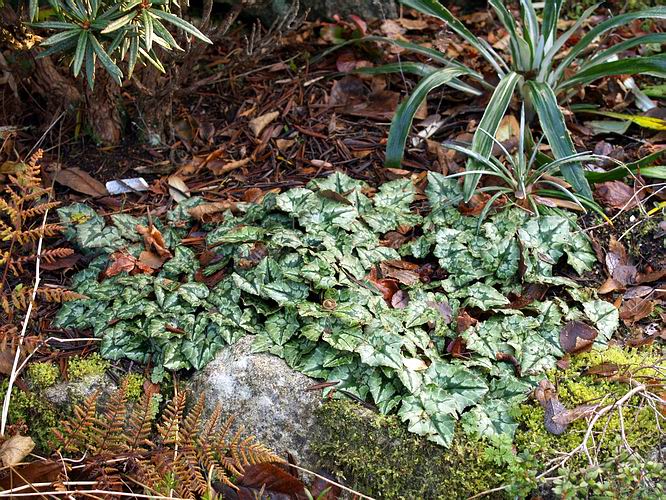
Cyclamen hederifolium leaves
Further along the same bed the leaves of a white form of Cyclamen hederifolium are a welcome feature to bring almost all year round interest. In our garden with its cool moist summers the leaves of Cyclamen hederifolium often persist well into the summer, only dying back just before the flowers emerge.
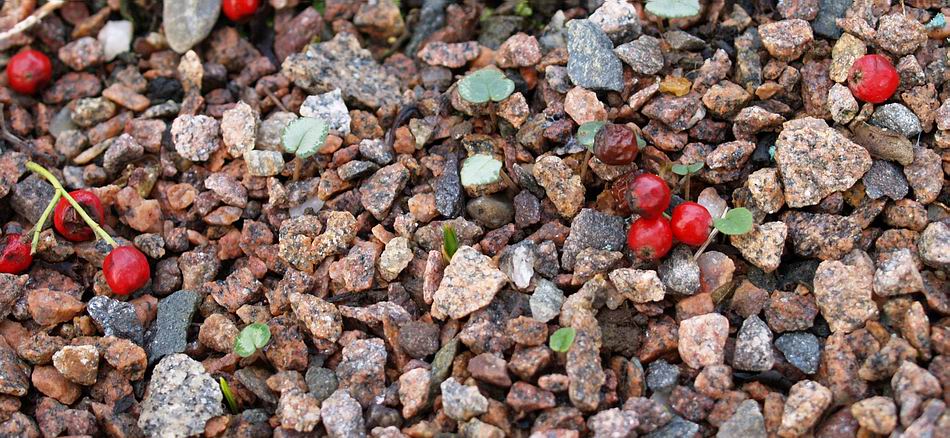
Cyclamen seedling leaves
Spot them? From the established leaves of a mature cyclamen here we have the tiny first leaves of Cyclamen coum seeds that I scattered in the gravel a few months ago; they are hardly the size of the fallen berries.
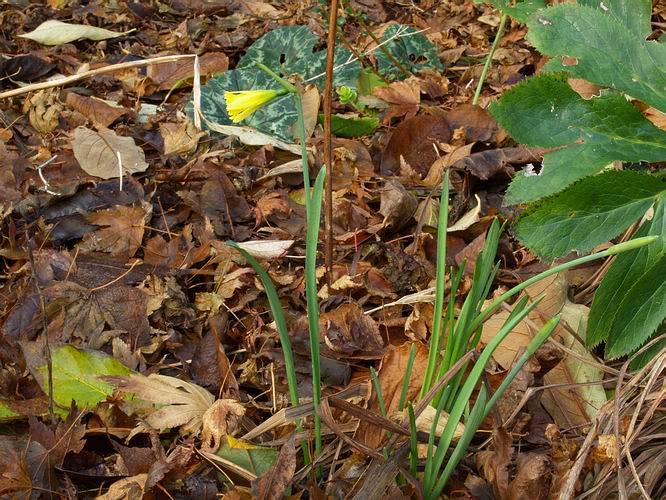
Narcissus 'Cedric Morris' in garden
Always the first of the trumpet daffodils to flower for us is Narcissus 'Cedric Morris'. We have it planted out in a few positions around the garden where it increases well but unfortunately the weather does batter the flowers about at times and of course the slugs love to eat it - where is that black bird when you need it?
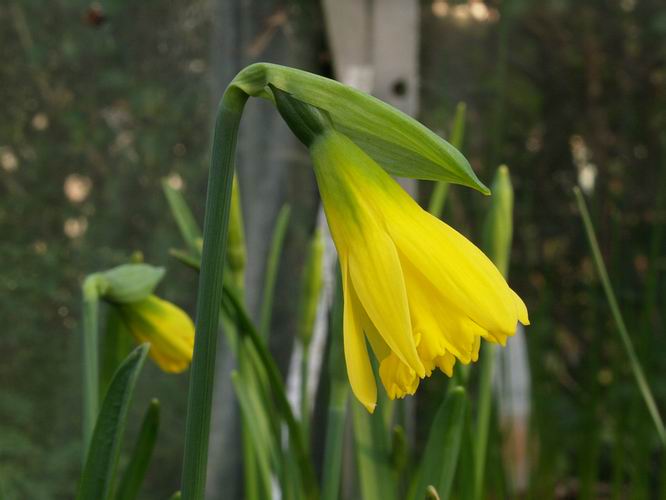
Narcissus 'Cedric Morris'
I always keep a couple of pots of Narcissus 'Cedric Morris' in the bulb house where I can enjoy their long lasting flowers all through the winter months. Because they never set seed the flowers think they still have a job to do so they just keep on going and can last well into February or March. Has anyone ever had seed from Narcissus 'Cedric Morris'?
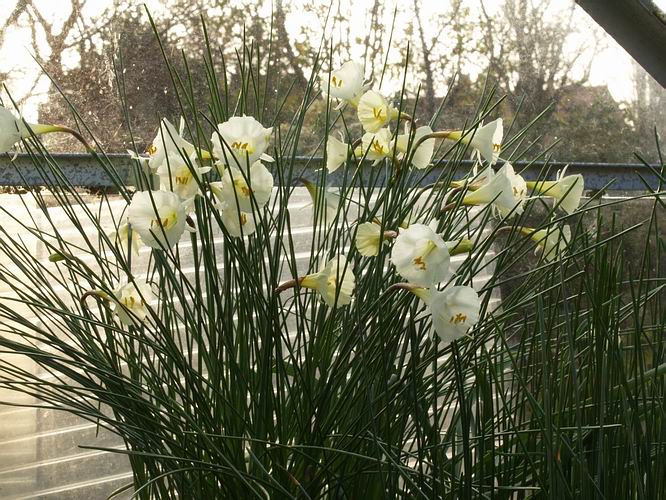
Narcissus romieuxii mesatlanticus
The ever reliable Narcissus romieuxii mesatlanticus produces a mass of flowers every single year - it has to be one of the best and easiest of the entire romieuxii group.
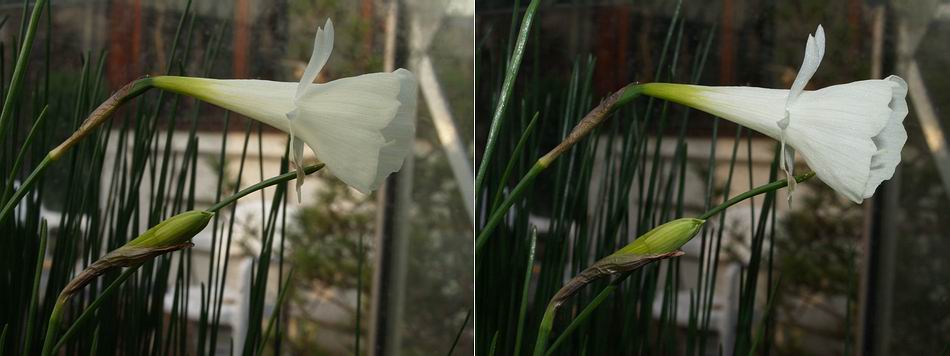
Narcissus cantabricus foliosus x2
Now for a few pictures of Narcissus cantabricus foliosus as I continue to play with learn my new camera - the picture on the left is taken using available light and I used the small built in flash for the right hand one. It is difficult to decide which one I prefer because the both have merits and present the plant well - just in different lights!

Narcissus cantabricus foliosus grey background
The same flower again taken using available light but this time with a grey background to allow the eye to concentrate on the subject.
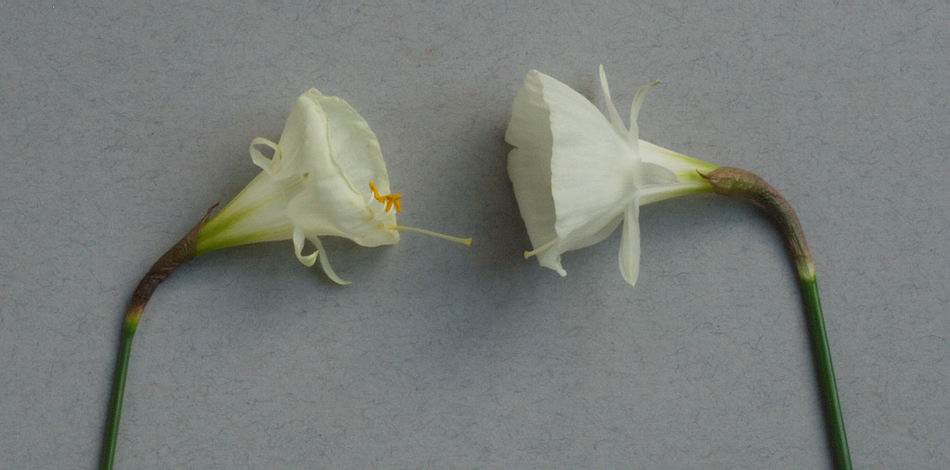
Identifying narcissus
A few tips on the diagnostics used by botanists to differentiate between the species of hoop petticoat narcissus: These two flowers look superficially the same but notice how the style and stamens of the left hand one protrude well beyond the corona while only the tip of the style protrudes on the other flower.
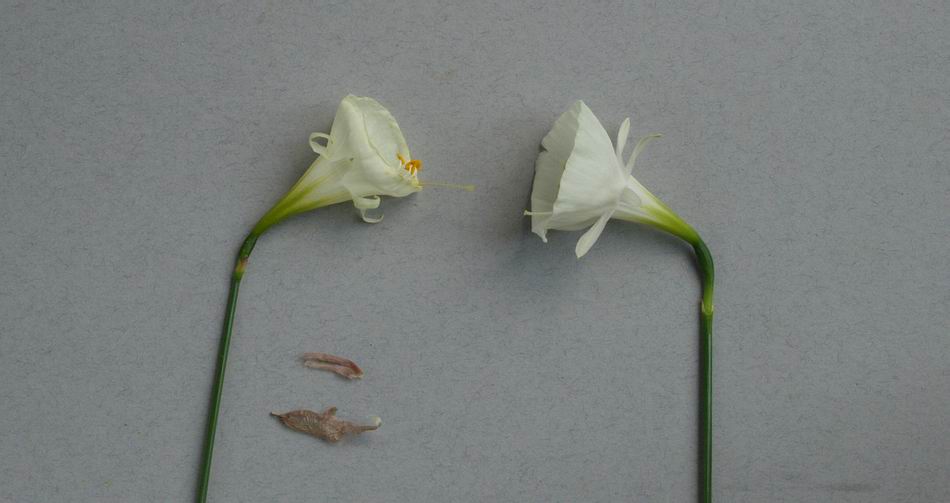
Narcissus pedicel
Next we check the pedicel - which is the short flower stem that rises from the top of the scape or main stem - important in the taxonomy. Having removed the papery spathe you will notice that left hand flower has virtually no pedicel at all - the flowers just emerges from the top of the scape while the right hand flower has a short pedicel between the top of the scape and the ovary. Narcissus have an inferior ovary that is to say it is below (outside) the flower while a superior ovary is above (inside) the flower, as in Lilies for instance. Most N. romieuxii have no pedicel or an extremely short one - the left hand flower is N. romieuxii mesatlanticus the right hand flower is N. 'Camoro' a hybrid between N. romieuxii and N. cantabricus monophyllus. Now most forms of N. cantabricus do not have a pedicel either but one of the diagnostics of N. cantabricus ssp. monophyllus is that it has a short pedicel and 'Camoro' has inherited that feature from this parent.
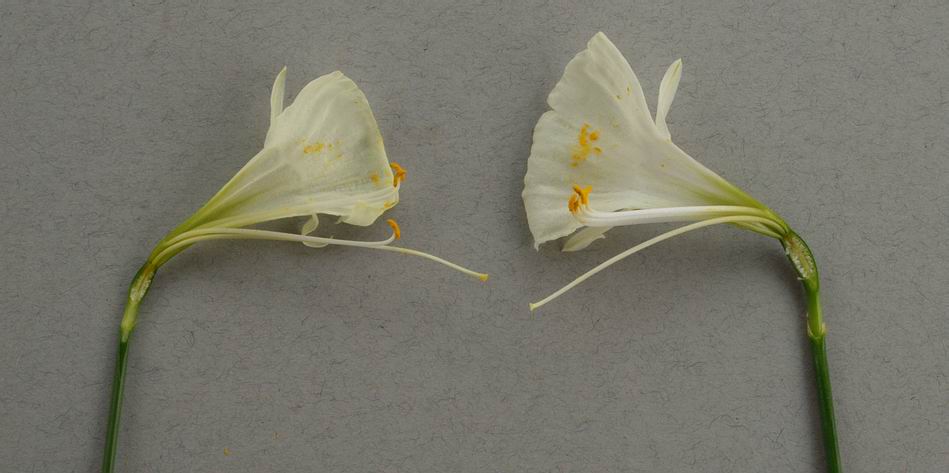
Narcissus flower sectioned
Another clue we look for when identifying some narcissus is the point where the filaments attach to the corona. In the case of the two flowers above the filaments all attach at the base of the corona in a single layer - in some other Narcissus the filaments may attach half way up the corona, sometimes three attach at one point and the other three lower down the corona - lots to look for to help identify superficially similar looking plants.
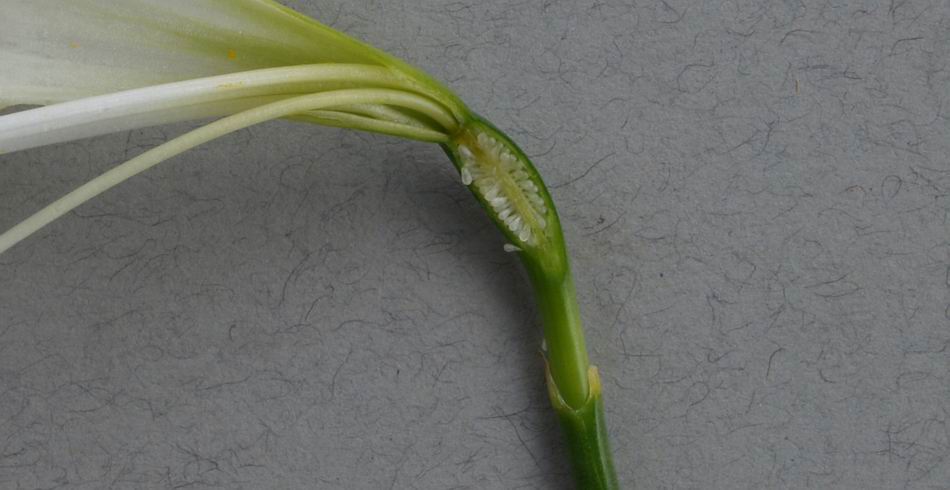
Narcissus embryo seeds
Finally a close view of the embryo seeds in the ovary awaiting the pollen tube growing down the style to fertilise them. The slight yellow brown discolouration at the top of the seed pod could be the pollen growth just about to reach the first seeds.
With the spathe removed the short pedicel can also be clearly seen at the bottom of the picture
While I do not suggest the wholesale destruction of your only flower, it is very rewarding, when you have plenty, to section and study the flowers.
^ back to the top ^
|

